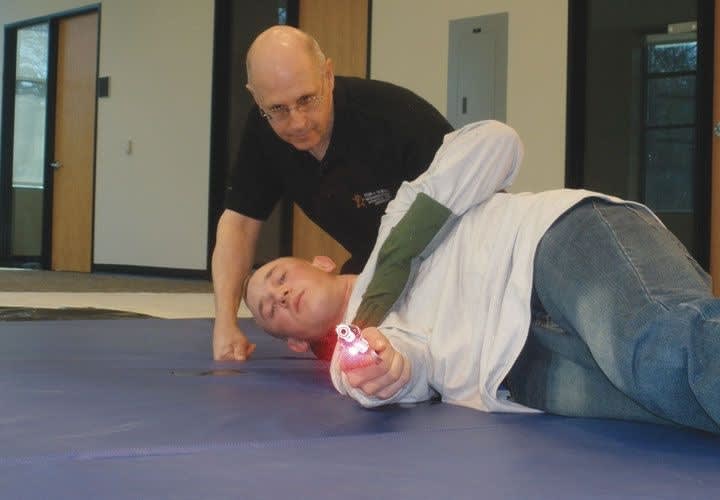Right, isn't that a big mystery? My God, people are shooting and turning and running away. And as they're running away, they're continuing to shoot. So what is the big issue of being shot in the back?
The press and the public get their knowledge about officer-involved shootings from Hollywood. In the old cowboy movies, Gene Autry allegedly never shot anyone in the back, but every time he shot somebody who was riding a horse away from him, they fell off the horse when he shot them because...Well, he shot them in the back.
There's this cowboy ethic-actually a made up Hollywood ethic-that pervades our culture that shooting someone in the back is perceived as a cowardly act. But we understand from dynamics that if not the most common then one of the most common types of shooting that officers get involved in is with a subject who has a gun, is fleeing at some angle away from the officer, and is shooting back toward the officer.
Even while turning and firing at the officer, the subject is covering five-and-a-half feet with every stride, and every stride will take a quarter of a second. The officer is firing at a cadence of a quarter second a round, the subject is traveling five-and-a-half feet in between each of those shots, and we're talking really quick: Bang! Bang! Bang! Bang! The subject is traveling, striding, five-and-a-half feet in between each of those rounds, and his body is in a different position and different alignment by the time he's struck.
The average time for someone to turn from having a gun pointed at an officer to being on that 90-degree plane and facing directly away from the officer is somewhere around 14- to 16 one-hundredths of a second. The average time frame for a head rotation is 15- to 18 one-hundredths of a second. That means, theoretically, an officer firing at a cadence of a quarter second a round can shoot at the subject in the front and the next shot a quarter second later will hit that subject directly in the back of the head.













